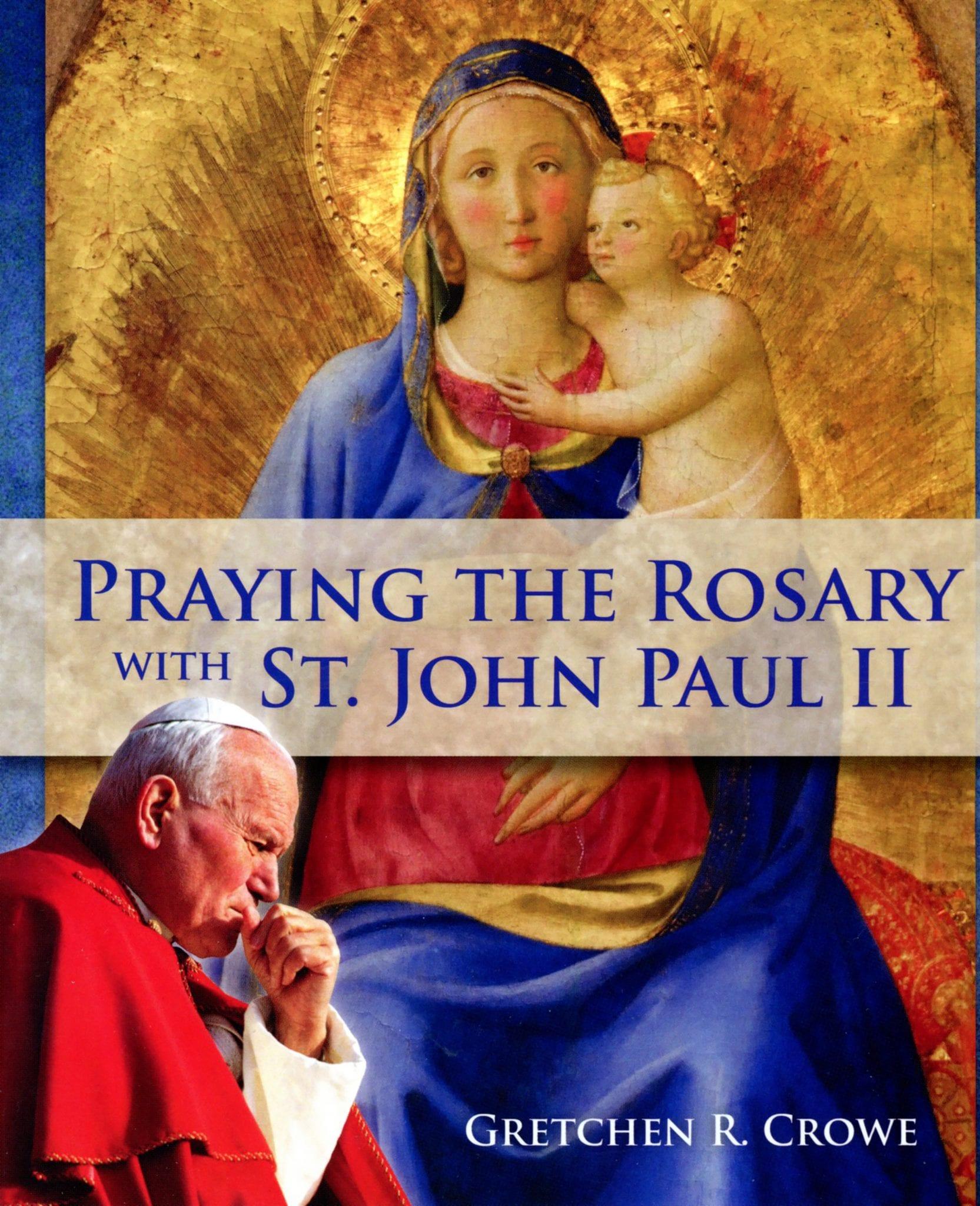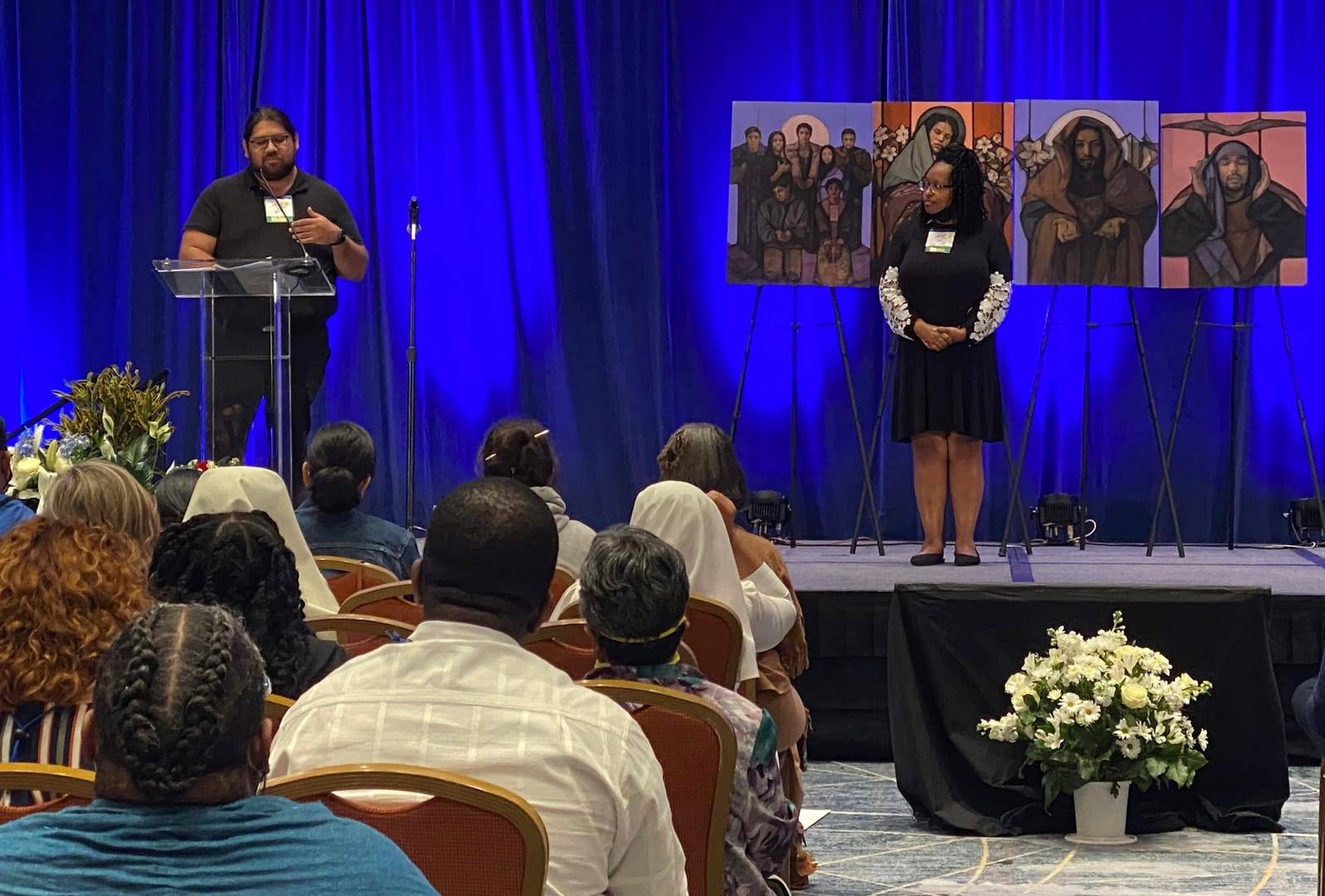WASHINGTON, D.C. — If the use of the rosary as a devotion fell off at some point in the past, that’s not the case now, according to Gretchen R. Crowe, Our Sunday Visitor’s editorial director for periodicals.
Under St. John Paul II, “we saw a real resurgence in praying the rosary,” said Crowe, author of “Praying the Rosary With St. John Paul II.” “He had such a great devotion to this Marian prayer that he inspired an entire generation of Catholics to come back to the rosary.”
Crowe added, “I think there’s a great power to the rosary, a great devotion to the rosary. I think John Paul exemplified that. I want to do, and try, everything I can, to help people reclaim that great gift of the rosary.”
The book, published Oct. 4, includes chapters for each set of mysteries — Joyful, Sorrowful, Glorious and Luminous, the last developed by the Polish-born pope — and each mystery contains a biographical note about St. John Paul as well as words from his writings or speeches.
It’s Crowe’s second book on the rosary. Her first — “Why the Rosary, Why Now?”– came out in 2017. Both are published by Our Sunday Visitor. She said her intent with the first book was to “make the case for people to have a devotion to the rosary … to face a lot of the trouble we’re facing in the world: increased secularity, troubles in the Church, the need for sanctity, our call to holiness.”
Crowe still remembers the rosary she got when she made her first Communion. “It was in a white packet, it said ‘My Rosary’ on it. I got it from my parents,” she told Catholic News Service in a Nov. 26 phone interview from Our Sunday Visitor’s offices in Huntington, Indiana.
“I would keep it with me at my bedside, and if I had trouble sleeping, I knew the rosary was there for me to turn to. I was 7, 8 years old, I didn’t quite know what the rosary was. I didn’t know the history of the saints using the rosary to grow closer to Christ.”
Crowe added, “I would keep the rosary under my pillow at night when I was a kid and pray a decade or two to lull to sleep. I heard somebody say, later on in life, that if I didn’t finish the rosary before I went to sleep, my guardian angel would finish it for me. That’s a beautiful thought.”
Today, Crowe and a rosary are like most people and their cellphones: always within reach. “I have a rosary pretty much everywhere. I have rosaries in my purses, on my nightstand, in my car. I have a little rosary keychain that’s on my keys. I try to keep them wherever I go,” she said.
That provides opportunities for her to pray the rosary.
“If you have children, like we do, we try to pray in the car when we go to Mass every Sunday as a family. My husband and I pray, obviously, but my 2-and-a-half-year-old last Sunday piped up, ‘Those are the prayers we say at bedtime!’ He already understands it better,” Crowe said.
“For people like me who are busy and trying to find time to pray the rosary, I think the best thing to do is to start small. If you can’t work in a full rosary, start with a decade or two decades,” she added. “I try to pray the rosary during my commute to work. I have an 18-minute commute to work. I find myself still praying some of the last prayers of the rosary while I’m walking up the steps, but I find that it helps me spiritually.”
And for those who haven’t memorized each and every prayer of the rosary, “Praying the Rosary With St. John Paul II” includes all of them.
“We wanted to make this book invitational. That’s why we included the prayers of the rosary at the end of the book,” Crowe told CNS. “We didn’t want not knowing the specific words to the specific prayers to be an impediment.”
“We want people to pray it. The prayers can be learned.”
Crux is dedicated to smart, wired and independent reporting on the Vatican and worldwide Catholic Church. That kind of reporting doesn’t come cheap, and we need your support. You can help Crux by giving a small amount monthly, or with a onetime gift. Please remember, Crux is a for-profit organization, so contributions are not tax-deductible.















